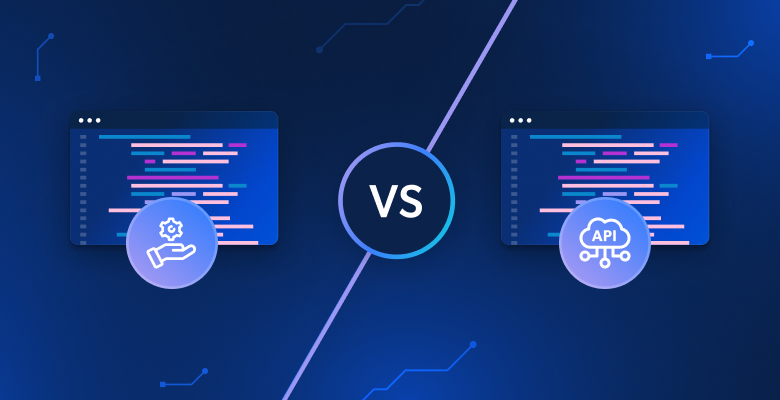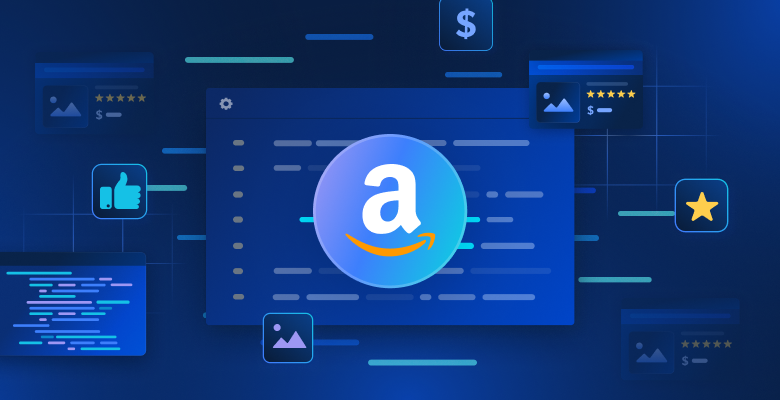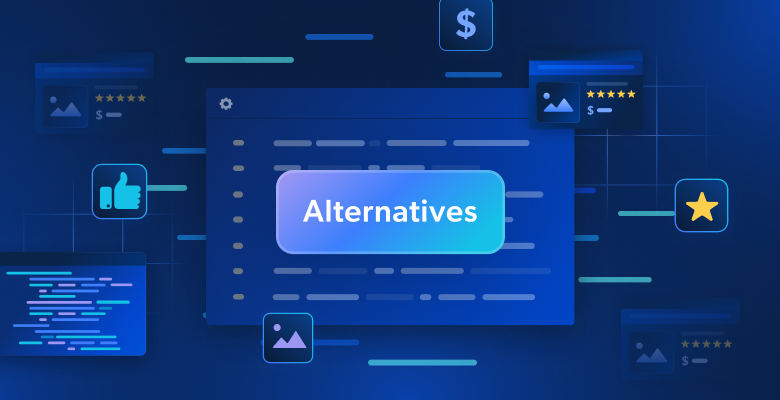In this article we will discuss:
- What is data extraction
- Types of data extraction and sources
- How to extract data
- How data extraction can help your business
- The best data extraction tools
What is data extraction
Data extraction is the process of obtaining target data from a pool of information such as open-source data that lives on the web. This is the first step in a process that uses the acronym ‘ETL’:
- Extract
- Transform
- Load
Once the target information, such as competitive pricing, and marketing data is collected, it can then be analyzed and used as Business Intelligence (BI) in the decision-making process. This can be carried out by a stakeholder such as a team leader who decides to pivot in terms of marketing campaign messaging or an algorithm that updates pricing based on real-time competitor changes.
Types of data extraction and sources
Data can come from a wide variety of sources which are almost as numerous as the different methodologies used to actually obtain the information being targeted.
Types of data sources
Data can be derived from internal activities such as statistics regarding customer retention, and churn, from government databases, and archives, as well as from the web.
Digital data sources
Data collected from the internet can be divided into Personally Identifiable Information (PII) as well as password-protected information – both of which are better to avoid collecting as this is illegal according to international data regulations including the General Data Protection Regulation (GDPR) in Europe, and the California Consumer Privacy Act (CCPA). Both of these have become industry standards and it is bad for businesses both legally, and from a consumer, perspective to be dabbling in them.
Open-source places where data can be collected and leveraged for business value include:
- Social media
- Search engines
- Competitor websites
- Discussion forums
- Government websites
- Historic archives
- eCommerce marketplaces
Physical data sources
The physical world generates billions of data points every second of every day including:
- Medical records
- Insurance applications, and complaint filings
- Mortgage/loan applications
- Point of Sale (PoS) transaction data
- Geolocation data generated by cars on the roads or consumers in shops
- Meteorological data pertaining to weather conditions, and natural phenomena
Types of data extraction
Datasets can come in many varieties, here are a few of the most popular ones:
One: Complete data records
This typically consists of all data points on a given target website. For example, all vendors, products, and customer reviews from a specific eCom marketplace.
Two: Differential Datasets
These are datasets that are consistently updated based on values that have changed or have been updated since the initial collection job. These may include pricing, number of followers (on social media)/employees, seed money collected, etc
Three: Smart subsets
These include using filters in order to gain access to very specific information that can help answer business questions or help inform business decisions. For example, “What is ‘Company A’ doing wrong?” and ‘What can we as a Venture Capital firm do differently to create value add?” A relevant data point here may be the negative sentiment on social media among millennial audiences regarding company products that do not take the environment into account.
Four: Enriched Datasets
These Datasets have a higher value than others as they merge information from multiple sources across the web, enabling stakeholders to have a wider view of the issue at hand. For example, cross-referencing reviews/consumer sentiment from 5 different websites/discussion forums.
How to extract data
First off, it is important to understand that there are two main categories when it comes to data:
Unstructured data: Is data in its most basic/rough form. Many times it includes duplicate entries, or corrupted files, and is in various different formats. It is very hard for systems, and algorithms to process, index, and use data in this form.
Structured data: This is data in its ‘purest’, most ‘refined’ form. Duplicate, and corrupted files have been done away with, and all data records have been converted into a uniform format. It is very easy for algorithms and systems to scan, index, analyze and produce valuable output from this type of data.
How to extract structured/unstructured data
There are many ways to extract structured/unstructured data depending on your skillset, and resources. For example, if you have programming skills, you could use Python to create a customized collector. Alternatively, you could use Structured Query Language (SQL) to organize and query data in a relational database.
For business people with no programming skills, however, it is probably best to opt for a fully automated web scraping solution like Web Scraper API. This is a tool that automatically cleans, matches, synthesizes, processes, and structures the unstructured target data before delivering it to your teams/systems. This data is already structured in your format of choice (JSON, CSV, HTML, or Microsoft Excel) and ready to be analyzed.
The structured/unstructured data extraction process
For people with a ‘programmer’s inclination’, feel free to check out our Python web scraping guide. Here is a general outline of the steps extracting data utilizing Python entails:
- Step 1: Choose the URL that you would like to target
- Step 2: Identify the data you would like to collect
- Step 3: Write the code
- Step 4: Run the code to extract the data
- Step 5: Store the data in the necessary format
For an automated tool like Web Scraper API the process is as follows:
- Choose the target website.
- Select your preferred collection frequency and data format.
- Have the data delivered to your destination of choice (webhook, email, Amazon S3, Google Cloud, Microsoft Azure, SFTP, or API).
How data extraction can help your business
Data extraction can be used in a number of ways to help you:
- Grow your business – For example, identifying new user needs by tracking search trends on Google, and then tailoring offers to those needs.
- More effectively competing – By seeing where your competitors are gaining the most traction with audiences (on social media for example) as well as which products have the highest conversion rates, enabling you to pivot.
- Marketing campaign optimization – Companies can tap into social sentiment from platform and incorporate responsive messaging in campaigns.
- Investment intelligence – Investment houses can track news articles, public sentiment, and open-source corporate financial activities in order to more accurately predict stock market movement on certain securities.
The biggest challenges businesses face with data extraction
Some of the biggest challenges that companies face when attempting to extract data include:
- Lack of technical knowledge in terms of programming and/or being understaffed as far as skilled/data extraction labor is concerned (DevOps/IT/programmers etc).
- Inability to build, buy, and maintain the necessary hardware and software to effectively carry out real-time data collection operations.
- Inability to collect, clean, process, and analyze data on a timetable that actually helps create ‘in the moment value’ so that decision-makers can optimize campaigns based on current competitor/consumer activities.
The best data extraction tools
There are many data extraction tools out there. Some are better than others – relevant factors to consider include the quality of the data, data sources, IP addresses, and peers. You need to be very careful which data provider you choose to work with ensuring that you are being sold quality, up-to-date information that was obtained legally to ensure the long-term value of your data-driven products, and services.
Bright Data’s products employ industry-leading standards as far as ethical data collection. All peers in our network have the option to opt-in, and out at their own discretion as well as being fully compensated for having their devices participate in our data collection networks.
We have a dedicated team that performs real-time compliance including code-based prevention and technological response mechanisms.
And finally, all data collection efforts are 100% compliant with international data laws including the General Data Protection Regulation (GDPR), and California Consumer Privacy Act (CCPA).
The two tools that are most popular among industry-leading corporations include:
Datasets
These are pre-collected, ready-to-use Datasets that can be ordered and obtained in a matter of minutes. All you have to do is choose the Dataset you want access to and have it delivered directly to your team/algorithms.

Web Scraper API
Web Scraper API is a fully automated tool that enables business people with zero technical know-how to gain access to a real-time flow of data with zero coding. It cleans and synthesizes target information, delivering structured data points directly to designated teams, and algorithms.
The bottom line
Data extraction is a leading option nowadays for massive data gathering and analysis, and it is assisting enterprises and individuals in improving their services and knowledge of customer/project expectations. Although data extraction can be accomplished without the assistance of a third party, outsourcing the process can assist in saving money and time so that it can be spent on more pressing business matters.




